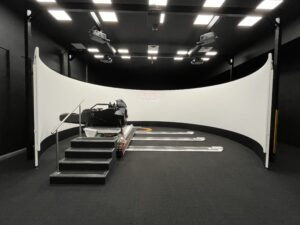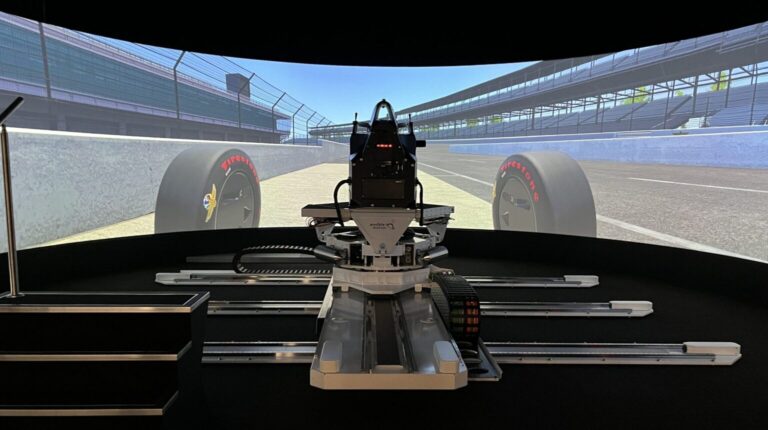Honda Racing Corporation (HRC) USA has unveiled its latest generation driver in the loop (DIL) simulator at its Indianapolis operations center.
This new Ansible Motion Delta S3 DIL simulator incorporates new modeling methods and motion technology to improve the simulation experience for racing drivers and engineers.
The simulator has multi-body vehicle dynamics physics simulation software, capable of generating up to 1.5MB of data per second across approximately 2,000 channels. It also features multiple cameras that record each session, synchronized with the logged data for precise analysis.
One of the drivers that used the new simulator in preparation for this year’s Indianapolis 500 was two-time winner Takuma Sato, who expressed strong enthusiasm about the experience: “We’re constantly looking for more correlation between the digital world and the real world. However, today the simulator model is very sophisticated, and now very close to the ‘real world’ – even in yaw, which was never possible before.”

The HRC simulator features a modified Indy car cockpit and can rotate a full 360° in yaw. The driver benefits from a 270° view on a screen that is 2.5m high and 9m in diameter, for a realistic on-track visual experience.
As an upgrade from HRC’s original model, which began operation in 2013, the new DIL simulator is designed to provide substantial time and cost savings for racing teams.
Extensive test programs can be conducted virtually, enabling teams to explore numerous chassis configurations and track conditions efficiently. This reduces the need for expensive and time-consuming on-track testing, according to HRC.
The simulator can also be configured to replicate various racing vehicles, including the current Dallara-Honda Indy car, the Acura ARX-06 hybrid GTP car, and other Honda and Acura concept racing vehicles.
The aerodynamic models used in the simulator are based on data from the Honda Manufacturing & Development 1:1 scale “HALO” wind tunnel in Ohio. Powertrain models are derived from Honda and HRC simulation technology.
“The new simulator is superior in every way to our original DIL simulator,” Ben Schmitt, head of the vehicle performance group at HRC US. “The vehicle physics models have continued to evolve from the original simulator, including the tire models, and our data acquisition capabilities are exponentially higher than previously. The new motion platform, cockpit and vision systems create a vehicle dynamics experience for the drivers that is our closest recreation yet of real-world conditions.”
HRC also provides an in-house engineering support for drivers and teams using the DIL simulator. Customized simulations can be established to meet the specific needs of the teams.


